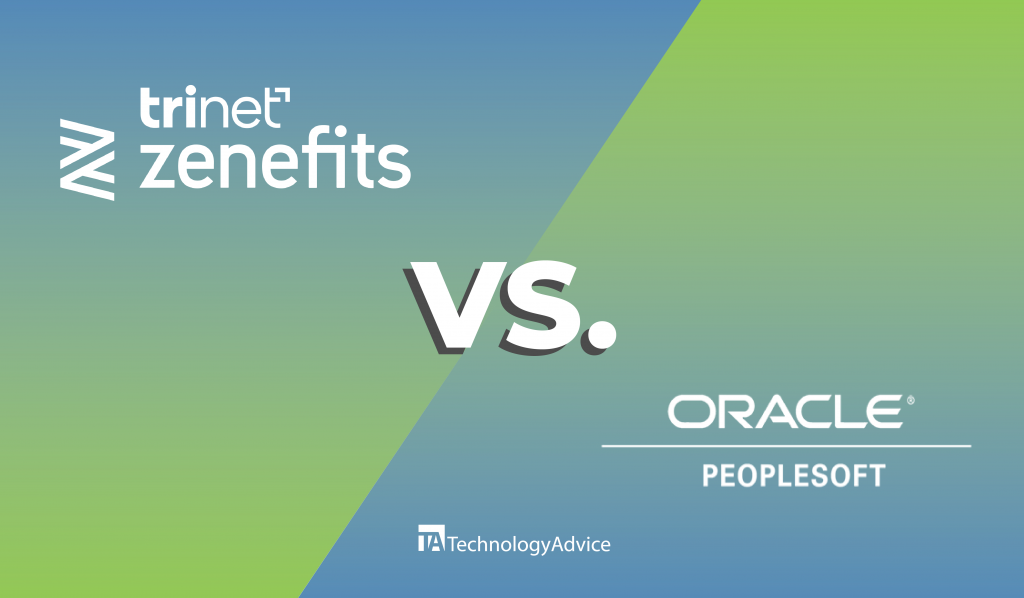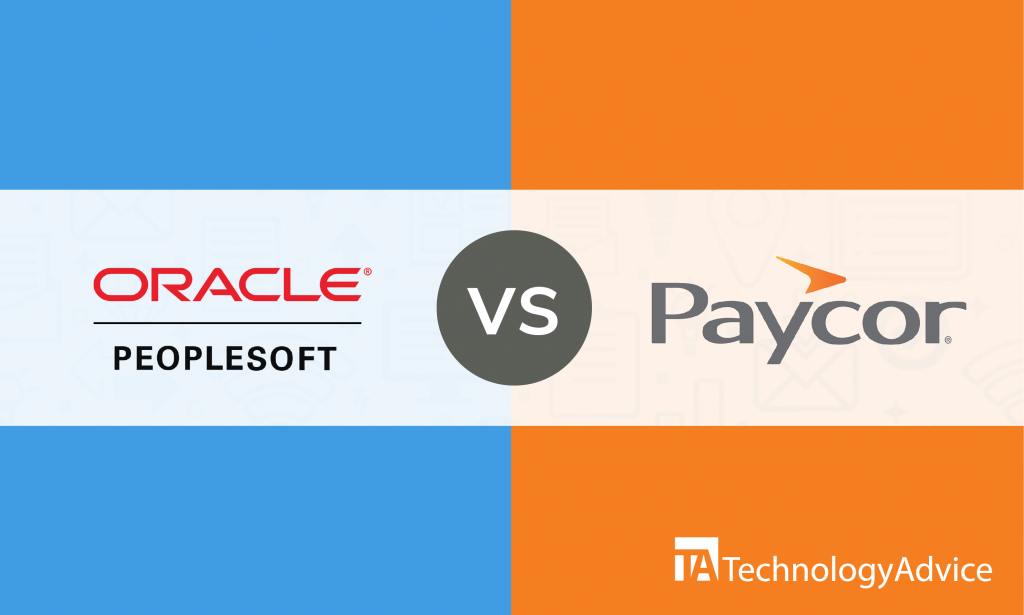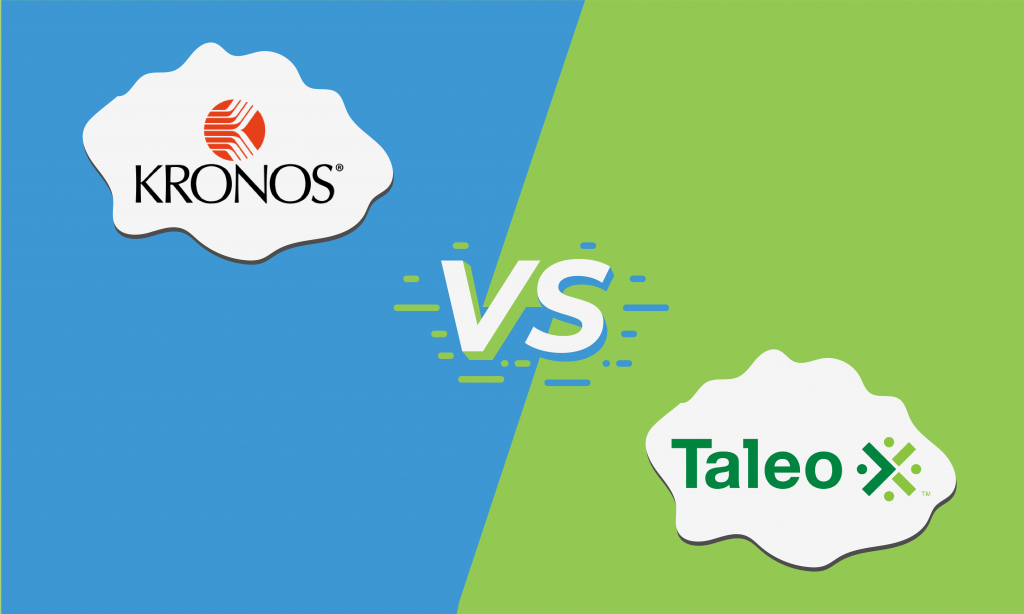Human Resource (HR) and Workforce Management supports the backbone of every organization because it helps make sure employees’ compensation, benefits, and commission are provided on time and accurately. It also helps business owners keep track of their time and attendance and make sure they are productive during work hours. Thanks to software technology, numerous workforce management solutions have been developed to help make tasks easier and allow HR managers to cut time and focus their attention on more pressing tasks.
Kronos and ADP Workforce Now are two of the most popular software products that are being used by many businesses today. Let’s take a closer look at their features, pricing plans, the size of the business they are designed for, and other considerations to help you decide if they meet your business’s needs.
We’ve compared Kronos and ADP, but if you’re in a hurry, use our HR Software Buyers Guide to get a free list of personalized software recommendations. We’ll ask you a few questions to learn what you need and then send you five vendors that meet those needs the best.
Kronos vs. ADP Workforce Now: An overview
Both Kronos and ADP Workforce Now have a good following, with thousands of companies all over the world using them.
Kronos has been in the software technology industry since 1977, providing quality workforce management software solutions. Through its leading product, Workforce Central, Kronos provides a suite of HR and workforce management applications that help businesses automate their processes such as payroll processing, time and scheduling, and attendance. The data is securely stored in the cloud to allow users to access it from anywhere. Kronos helps businesses deliver payroll runs quickly, so that employees are compensated and remain satisfied at work.
ADP Workforce Now is a cloud-based HR application that collects your business’s processes into one dashboard for automation. It manages employee holidays and benefits and helps organizations generate insightful reports. As an HR application, it comes with capabilities for time and attendance, payroll, benefits management, and talent management. ADP Workforce Now also has a benefit plan creation wizard, which is configurable according to the on-boarding processes of the business.
Kronos vs. ADP Workforce Now: A comparison of features
Every workforce management software product comes with core features that are necessary to every business.
Kronos has numerous features. Here’s the top 5:
- Taxes: Workforce Central has made tax computation and filing easier. The payroll vendor can make electronic tax payments on behalf of your business by virtue of a power of attorney.
- Core HR: Everything that is under HR control and supervision can be done through this feature. Your business can track reimbursements and expense reports, manage attendance, process salaries, and comply with labor regulations specific to the country your business operates in.
- Workforce management platform: You are better able to manage attendance and absences, as well as shift scheduling, with Workforce Central. It enables you to see the approved time off and shift schedule, so you can anticipate high and low labor demands.
- Automation: Manual data entry is a thing of the past when you use this workforce software. You can save time and use it for tasks that need more attention, while eliminating errors in your data.
- Employee self service: This feature lets the HR department focus their attention on processes that cannot be left to automation. Meanwhile, employees can easily access their pay stubs and W-2 form using their credentials within the web portal. The software also provides an avenue for asking and answering questions about benefits.
ADP Workforce Now also has a suite of features:
- Core HR: Core HR features include salary structures, expense management, organization management, and compliance. It provides employees with an organizational structure they can use as needed for reporting and permissions.
- Employee self service: This feature allows users to access their previous and current pay stubs, W-2 form, and salary information from the web portal. This is also mobile, so they can access the portal from their smartphone. Additionally, employees can ask or answer questions about benefits using this feature.
- Benefits administration platform: This feature provides a centralized database where employees can track and manage benefits and eligibility information. It also serves as an avenue for employee enrollment to health insurance plans. Plus, its documents manager stores and organizes on-boarding documents like W-4s and W-9s.
- Automation: This feature automates processes and makes sure paid and unpaid time off are requested, approved, and tracked to minimize errors.
- Sourcing: This feature is concerned with job postings and candidate search integration with career sites.
Kronos vs. ADP Workforce Now: A comparison of prices
Kronos doesn’t have publicly available pricing information. However, the vendor is responsive to requests for price quotations.
ADP Workforce Now also doesn’t disclose their pricing plans publicly, which is a common practice for many software vendors. You can contact them to request a quote.
Kronos vs. ADP Workforce Now: A comparison of business size
Kronos reports having 1,632 companies use its Workforce Central software and most of them are based in the US, specifically operating in the hospital and healthcare industry. These companies have less than 10,000 employees and earn less than 100 million dollars in revenue.
ADP, which is the mother company of ADP Workforce Now, is ranked #239 in Fortune 500’s 2019 report. It estimates that about one in every six employees is paid their salary through ADP. It’s suitable for small businesses because it believes even start-ups need all the support they can get from software solutions.
Read also: The Best Recruitment Software For Agencies
Making the Choice
Based on the information above, it can be said that both Kronos and ADP Workforce Now service the same markets and business sizes. Their core features are also very similar. What remains to be seen are their pricing plans, which can be obtained by making a quotation request from the vendor.
Want more HR software options? Use our HR Software Buyers Guide.





